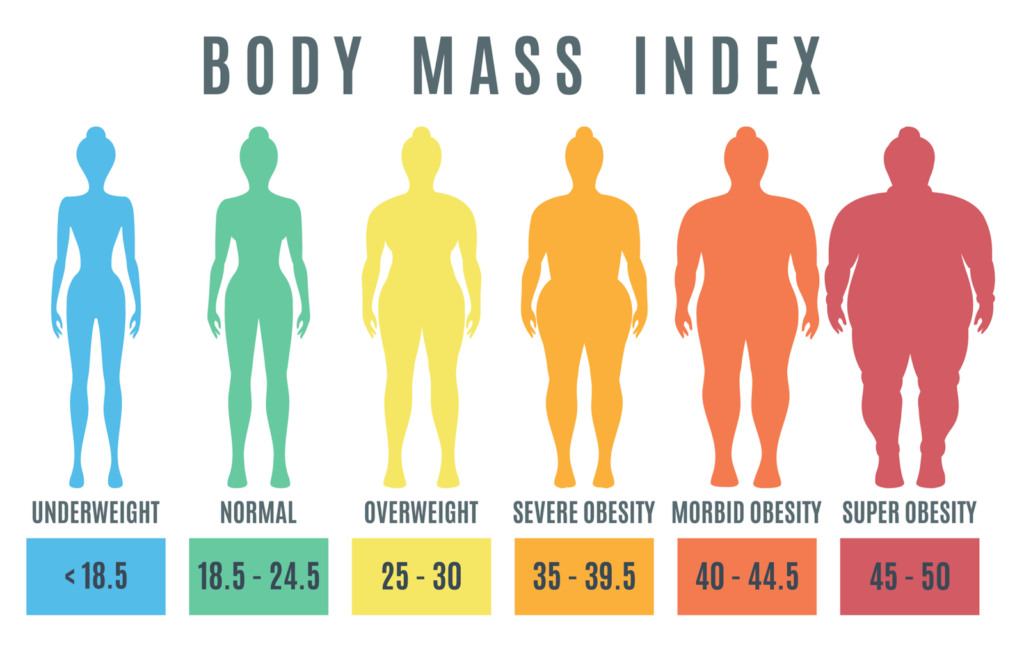Lipedema is a common condition that is often mistaken for obesity or lymphedema. The main difference with Lipedema vs obesity is that Lipedema fat does not respond to traditional diet and exercise methods. So, being accused of being overweight or obese when suffering from Lipedema is extremely disheartening.
There is currently no cure for Lipedema, however there are several conservative measures that can manage the symptoms and slow progression. Attempting to lose weight in the same way you would as an obese person will not have an affect on Lipedema.
According to the World Health Organisation (WHO), the definition of obesity is based on Body Mass Index (BMI). Although personally, I don’t believe that BMI is a consistent measure for obesity at all. For the diagnosis of Lipedema, Waist-to-Height (WtH) ratio is more important than the BMI. WtH ratio is beneficial to assess shape disproportions that are typical for Lipedema.
In obese patients, the presence of excessive fat is associated with significant risks to health, being overweight and obesity can both lead to chronic medical conditions associated with the heart and cardiovascular system, diabetes, osteoarthritis, and an increase the risk for some cancer types.
The conflicting characteristics of Lipedema vs obesity are outlined below:
Gender – Lipedema vs Obesity
- Lipedema: almost exclusively occurs in women
- Obesity: occurs in both men and women
Age of Onset – Lipedema vs Obesity
- Lipedema: often associated with hormonal changes in the body such as puberty, use of birth control pills, pregnancy, menopause, and phases of excessive weight gain
- Obesity: obesity can develop in early childhood, but it is not linked to a specific age range
Family History – Lipedema vs Obesity
- Lipedema: some Lipedema patients report similar signs and symptoms in other female family members
- Obesity: a very common link between family members with obesity
Affected Areas – Lipedema vs Obesity
- Lipedema: Lipedema usually affects both legs or arms equally. The hands and feet are spared. Enlargement of the legs or arms often results in shape disproportion – a narrow waist and larger hips, thighs, calves and ankles
- Obesity: obesity affects the whole body, usually symmetrically
Common Signs – Lipedema vs Obesity
- Lipedema: limbs are often tender, sensitive, and sometimes painful. Lipedema fat feels different from normal body fat, it feels cooler, softer, and can appear dimpled with an orange-peel like appearance
- Obesity: no specific signs, in particular no painful fat in people with obesity
Complications and consequences – Lipedema vs Obesity
- Lipedema: limited social life, mental distress (including chronic stress, depression, and anxiety), joint problems, failed diets, varicose veins, overweight in the latter stages
- Obesity: health risks, chronic diseases of the cardiovascular system, heart problems, diabetes, degenerative disorders of the joints
Although Lipedema and obesity are two very different medical conditions with separate symptoms and causes, they can often occur in conjunction. Studies show that up to 85% of Lipedema patients are obese. This is a shocking statistic.
When hearing from women in the community, they consistently claim that they must have started with Lipedema at stage 1 and struggled to lose weight from their limbs. Then, because they didn’t know what Lipedema was, it progressively got worse over the years with poor management. It makes you wonder how many of them would have been able to slow progression and remain at stage 1 or 2 if they’d been educated properly.
Unfortunately, once Lipedema sufferers reach stage 3 or 4, the condition is much more difficult to manage and day to day activities become a challenge. It’s little wonder that many women in the latter stages suffer from obesity as well as Lipedema.
Disclaimer: My blogs talk about Lipedema, diet, surgery and much more. I’m talking from my point of view to help women, and remind them they are not alone. I am not a medical professional, so the content above is from my own perspective with research I have done into the topic. It’s not meant as medical advice, you should always consult your doctor or a specialist for both your diagnosis, and a treatment plan.


